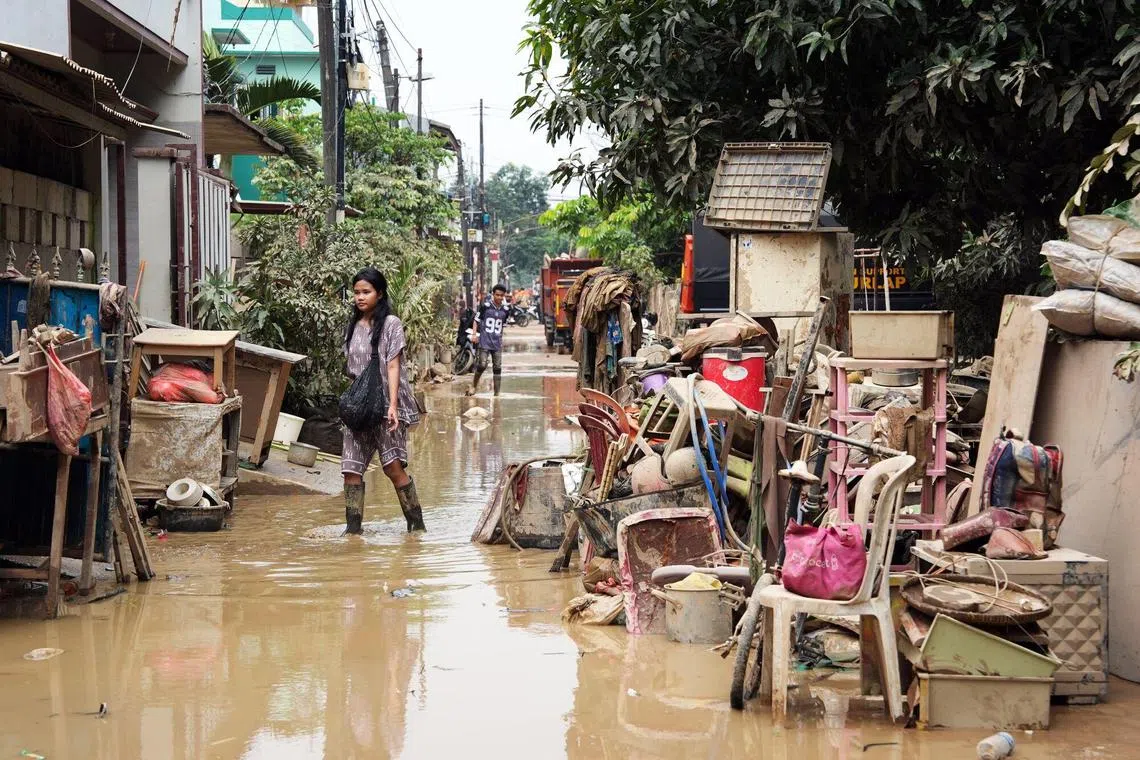Cities face ‘whiplash’ of floods and droughts as temperatures rise, study warns
Sign up now: Get ST's newsletters delivered to your inbox

Resident wade through the flood in Bekasi, Indonesia.
PHOTO: BLOOMBERG
Follow topic:
SINGAPORE - The weather in some of the world’s most densely populated cities is swinging from droughts to floods and back again, as rising temperatures play havoc with the global water cycle, a study commissioned by the charity WaterAid showed on March 12.
South and South-east Asia face the strongest wetting trends, while Europe, the Middle East and North Africa are becoming ever drier, researchers found in a study of 42 years of weather data drawn from more than 100 of the world’s most populous cities.
“There will be winners and losers associated with climate change,” said Professor Michael Singer of the Water Research Institute at Cardiff University, one of the authors of the study. “It’s already happening.”
China’s eastern city of Hangzhou and Indonesia’s capital of Jakarta topped the list of cities suffering from “climate whiplash”, or a rapid succession of prolonged floods and droughts, the study showed.
As much as 15 per cent of the cities surveyed also faced the worst of both worlds, with extreme flood and drought risks rising at the same time, among them the Texan city of Dallas, the Chinese commercial hub of Shanghai and Baghdad, the capital of Iraq.
“You can’t just assume that every place can have a similar response to atmospheric warming,” said Prof Singer. “It doesn’t care who you are, whether you’re wealthy or poor, or you have great infrastructure or not.”
China’s coastal city of Hangzhou set a record with more than 60 days of extreme high temperatures
A fifth of the cities have seen a reversal in climate extremes, with the Sri Lankan capital of Colombo and India’s Mumbai “flipping” to become far wetter, while the Egyptian capital of Cairo and Hong Kong are steadily drier.
Many cities that built infrastructure either to maximise scarce water supplies
The few experiencing favourable changes include the Japanese capital of Tokyo, London and China’s southern Guangzhou, which had significantly fewer wet and dry months over the period from 2002 to 2023 than in the two prior decades. REUTERS

